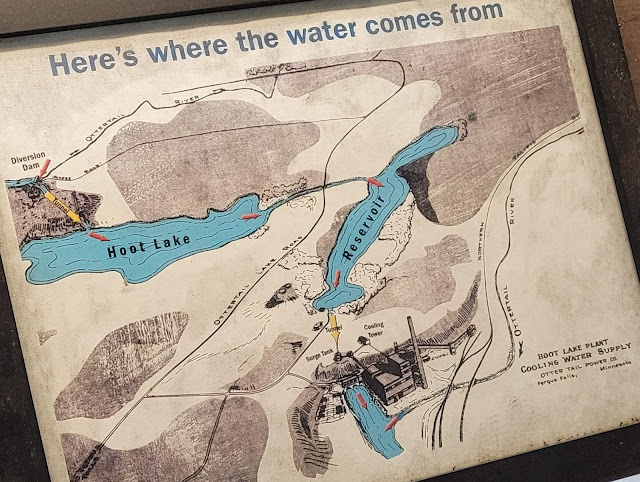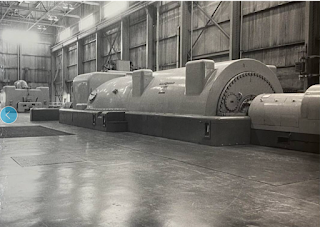In case they ever move the dragline, I saved the satellite image.
 |
| Satellite |
Matt Weyand posted two photos with the comment: "Stopped by to see Mr. Tom today. Does anybody know why the back doors are open on the house?"
Tommy Black: They just spent 30 million rebuilding it and moved him cross country 18 miles ,no way they scrapping it.
Nate Nowak: Tommy Black how long has it been sitting since the rebuild and move?
Bruce Pennington: Nate Nowak About 11 years
 |
| 2 |
It last dug dirt in 1995.
 |
| Kelly Michals Flickr, 1 of 115 photos via al License: Creative Commons Attribution-NonCommercial (CC BY-NC) Bucyrus Erie 1570 Walking Dragline Mr. Tom Double Clutch 73 11y : I hear this machine is in the process of being restored and is going back to work. Cleve Whatley 4y : While it was being restored the coal market fell and it never went back to work. It walked from the old mine it was working near Kellerman to Twin Pines near Abernant and was parked until the market came back. |
 |
| al, the fifth of ten photos of it walking the 17 miles After a year of work, the Drummond Co. has brought a 20-story tall dragline crane, called Mr. Tom, back to life and is now moving it about 17 miles from Brookwood to Abernant. "Along the path, Mr. Tom moves about one mile per day, one three-foot step at a time." |
I can't decide if it walks forward or backwards. Note high high they cover the road with dirt before they walk over it.
 |
| al, the first of ten photos of it walking the 17 miles "Each time Mr. Tom has crossed a road, the road must be closed. The Alabama Department of Transportation allows such a road closure to last only a day, and when the company is done, the road must be returned to its previous condition. Before the sun rises, earth-moving crews set to work, covering the highways with a dirt bridge, which Mr. Tom crosses early in the morning. As soon as the machine crosses the gap, bulldozers, track hoes and dump trucks remove the dirt bridge. When Mr. Tom crossed U.S. Highway 216 on either side of Brookwood, the highways were set back so meticulously that the grass on either side of the road looked as though it had never been touched, much less buried, under tons of earth and crushed by such a huge machine." |
In a mine, it would get its electricity from the grid.
 |
| al, the fourth of ten photos of it walking the 17 miles "As quickly as the demand for metallurgical coal spiked [in early 2011], in the last year the price has fallen just as fast. Coal that was selling for more than $300 per ton is going for half that much today [Jan 2013]." |
I don't know if this was at this pit, but it is a Drummond operation.
Wendell Bennett posted five photos.
 |
| 1 |
 |
| 2 |
 |
| 3 |
 |
| 4 |
 |
| 5 |
Michael Davis Flickr
"Late last year, the company fired up Mr. Tom, its nickname for a giant 1970s-era dragline, to strip coal at the company’s Shannon mine, southwest of Birmingham. Mr. Tom is a 3,750-ton crane with a 320-foot (98-meter) boom that swings a bucket big enough to scoop up four Toyota Priuses. In January, Drummond moved the dragline 18 miles from an old mine near Brookwood, Alabama, to the Shannon mine on mechanical feet. The state required the company to write a 22-page cultural resource assessment of artifacts that Mr. Tom might crush on its journey." [fa-mag]
Are these 27 Steve Kole 1976 photos (source) of this mine or another Drummond mine?














































